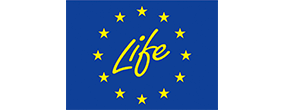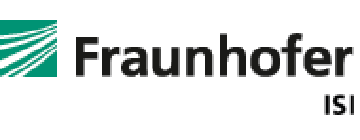Overview
In 2022, Croatia's final energy consumption reached approximately 6.8 Mtoe, which was 13% higher than the 2000 level. The residential sector was the largest consumer of energy in 2022, with its consumption remaining steady from 2000 to 2022. Energy use in the transport and services sectors grew by 1.9% and 2% annually, respectively, between 2000 and 2022. Meanwhile, energy consumption in the industrial sector declined by 0.7% per year during the same period. Overall energy consumption in buildings, which includes both the residential and service sectors, increased by 0.5% per year throughout the observed timeframe.
Figure 1: Final energy consumption by sector (with climatic corrections)
Source: ODYSSEEFrom 2000 till 2022, energy efficiency for final consumers, as measured by ODEX, improved by 21% (1.1% per year). The largest energy efficiency gains were achieved in the industry sector (2.1% per year), followed by the residential sector (1.2% per year); the trends in these sectors can be explained by the introduction of various regulations and financial incentives. Energy efficiency progress was much slower in the transport and services sector (0.4% and 0.3% per year, respectively).
Figure 2: Technical Energy Efficiency Index
Source: ODYSSEEThe Integrated National Energy and Climate Plan for the period through 2030 builds upon existing national strategies and frameworks. The key targets set by the Plan for 2030 include: 1) a 62% reduction in greenhouse gas emissions (GHG) in the ETS sector compared to 2005; 2) a 16.7% reduction in GHG in non-ETS sectors compared to 2005; 3) a share of renewable energy sources (RES) in gross final energy consumption of up to 44%; 4) a share of RES in final energy consumption in transport of up to 24.6%; 5) primary energy consumption (total energy consumption excluding non-energy use) limited to 336.9 PJ; and 6) final energy consumption capped at 246.2 PJ.
Table 1: Sample of cross-cutting measures
| Measures | NECP measures | Description | Expected savings, impact evaluation | More information available |
|---|---|---|---|---|
| Reducing an individual's carbon footprint by changing lifestyle habits | Yes | By changing the lifestyles and styles of individuals and society, a significant reduction in resource consumption and greenhouse gas emissions can be achieved. Therefore, this measure aims to encourage changes in consumer habits, dietary habits in the direction of including/using more food of plant origin, habits related to transport and travel, ways of using and owning various appliances in households, etc., which can be expressed through the reduction of an individual's carbon footprint. However, to change our habits, we need to be aware of the impact of our own carbon footprint and know how to reduce it. The cultivation of grain for animal feed produces much more greenhouse gases than the production of grain for human consumption. Increasing the consumption of foods of plant origin contributes to better health, and significant reductions in emissions and water and energy savings can be achieved. Therefore, it is proposed that activities be carried out to educate and encourage citizens to change their lifestyle and eating habits and adopt energy-efficient practices. | Change habits toward increasing (energy) efficiency, sustainable/circular use of resources, materials, and products; Positive effects on people's health. Awareness of the personal role in change and spillover into other aspects of professional life and decision-making, and ultimately mitigating climate change through reducing GHG emissions and personal carbon footprint. | Link |
| Improving the sustainability of urban areas | Yes | This measure aims to encourage cities and municipalities to build projects to revitalise and develop new urban environments on sustainability principles. The first step in achieving this goal was the development of the Programme for the Development of Green Infrastructure in Urban Areas for the period 2021-2030 and the Circular Spatial and Building Management Development Programme for the period 2021-2030, which were adopted by the Government of the Republic of Croatia in December 2021 and represent the national framework for the development of sustainability in urban areas. The programmes aim to improve the environmental, economic and social benefits of sustainable development by increasing the energy efficiency of buildings, developing green infrastructure in urban areas, reducing the temperature in the areas of heat islands, and encouraging circularity measures when planning new buildings, reusing abandoned and/or neglected existing spaces and buildings, reducing the amount of construction waste in urban areas. | Reduction of heat demand and energy consumption in public and residential buildings, increase in RES usage, and consequently, reduction in CO2 emissions. | Link |
| Carbon Removal Certification | Yes | Carbon removal certification should enable a significant increase in carbon removal to achieve the goal of a climate-neutral Union by 2050 and will help achieve the EU's ambitious climate goal. The carbon removal certification system is voluntary and encourages carbon removal activities. The importance of rewarding forest owners, farmers and land managers for their ecological ambitions at the farm level is especially recognized. The proposed regulation will also help companies report on corporate sustainability reporting and provide greater transparency to public and private organizations' climate neutrality claims to avoid manipulative green marketing. The Republic of Croatia will develop this measure following the progress made in the framework prepared by the European Commission. | Certified units for carbon removal and emission reduction activities. | Link |
Buildings
In 2022, space heating accounted for around 69% of the final energy consumption of the residential sector, electrical appliances and lighting for 13%, water heating for around 10%, cooking for 6% and air cooling for around 2%. Between 2000 and 2022, final energy consumption for electrical appliances and lighting increased by 10% (0.4% per year), and final energy for water heating by 3% (0.1% per year). In contrast consumption for cooking decreased by 22% (1.1% per year).
Figure 3: Energy consumption of household space heating per m2 (with climatic corrections)
Source: ODYSSEEFigure 4: Energy consumption per dwelling by end-use (except space heating)
Source: ODYSSEEFinal energy consumption of residential buildings was almost at the same level in 2022 as in 2000. This was the result of two opposite trends. Increase comfort (more appliances per dwelling and larger homes) contributed to increase consumption by 0.86 and 0.59 Mtoe, respectively, while by energy savings decreased consumption by (0.7 Mtoe). Other effects, which can be mainly interpreted as change in heating behaviours, also offset the effect of drivers on consumption growth (-0.78 Mtoe).
Figure 5: Main drivers of the energy consumption variation in households
Source: ODYSSEEBetween 2000 and 2022, the energy consumption per employee increased by 0.7% per year. The electricity consumption per employee increased by 2% per year over the same period, as a result of a widespread diffusion of IT and electrical appliances in offices.
Figure 6: Energy and electricity consumption per employee in services (with climatic corrections)
Source: ODYSSEEPursuant to Article 2a of Directive 2018/844 amending Directive 2010/31/EU on the energy performance of buildings, the Republic of Croatia has adopted a new Long-term strategy for renovation of the national building stock until 2050 (29th session of the Government of the Republic of Croatia, 14th December 2020), with a plan of measures and indicators for 2030, 2040 and 2050. The building renovation rate according to the text of the Long-Term Strategy in the period from 2021 to 2030 is growing from the current 1% per year to 3% per year in 2030, rising to 3.5% in the period until 2040 and 4% by 2050. The increased renovation rate outlined in the Long-Term Strategy results from a significantly lower building demolition rate. While abandoned buildings do not burden the energy system, the goal of decarbonizing the entire building stock by 2050 requires the renovation of unused buildings, necessitating an increase in renovation efforts relative to new construction.
Table 2: Sample of policies and measures implemented in the building sector
| Measures | NECP measures | Description | Expected savings, impact evaluation | More information available |
|---|---|---|---|---|
| Promoting the decarbonisation and application of the “energy efficiency first” principle in buildings | Yes | Through workshops and the Open Partner Dialogue, the aim is to create a broad network of connected professionals ready to engage in dialogue and contribute to decarbonising the building stock by 2050. Open Partner Dialogues bring together representatives of state and local government, the academic community and the professional public, the construction and energy sectors, and related industries at thematic workshops organised by the Ministry. This measure increases the level of awareness of the benefits of energy efficiency with the consequent change in behaviour and reduction in energy consumption by applying concrete measures. Support for a regulatory measure for the construction and renovation of buildings as well as a promotional measure that will result in a measurable reduction of energy consumption, greater use of RES and avoided CO2 emissions. Increase of professional capacities for the implementation of energy efficiency measures. | Increasing the level of awareness | Link |
| Energy renovation programme for apartment buildings | Yes | Several categories of renovation are foreseen (integral energy renovation, in-depth renovation, comprehensive renovation) and three implementation models (renovation of apartment buildings not damaged in the earthquake, renovation of apartment buildings damaged in the earthquake, financial support for citizens at risk of energy poverty). It is necessary to encourage the restoration to the nZEB standard more strongly. | Estimated energy savings in 2030 amount to 1.87 PJ (44.6 ktoe; 518 GWh); estimated reduction in CO2 emissions in 2030 125kt CO2); cumulative energy savings over 2021-2030 8.45 PJ (202 ktoe; 2.35 TWh); cumulative reduction in CO2 emissions in 2021- 2030. 566 ktCO2. | Link |
| Energy renovation programme for family houses | Yes | The programme needs to be conceptualised as a continuation of the implementation of the Energy Efficiency Programme for single-family homes from 2014 to 2020, with co-financing from the Environmental Protection and Energy Efficiency Fund. It is necessary to ensure the continued implementation of the renovation of family homes by renewing public calls for grants every year for 2021-2030. This measure reduces thermal needs and energy consumption in family houses and increases RES use and consequent reduces CO2 emissions. | Estimated energy savings in 2030 amount to 4.47 PJ (107 ktoe; 1.242 GWh); estimated reduction in CO2 emissionsin 2030 299 ktCO2; cumulative energy savings over 2021-2030 20.26 PJ (484 ktoe; 5.6 TWh); cumulative reduction in CO2 emissions in 2021-2030 1,356 ktCO2. | Link |
| Energy renovation programme for public sector buildings | Yes | The measure represents the continuation of implementing the Program for Energy Renovation of Public Sector Buildings from 2016 to 2020. The Government of the Republic of Croatia adopted the Energy Renovation Program for the Public Sector up to 2030 („Official Gazette“, No. 41/22). This measure reduces heat demand and energy consumption in public sector buildings and increasing RES use and consequently reduce CO2 emissions. | Estimated savings in 2030 1.69 PJ (40 ktoe); estimated CO2 emission reductions in 2030 46.5 ktCO2e; cumulative energy savings in 2021-2030 9.3 PJ (222 ktoe); cumulative CO2 emission reduction over 2021-2030 264 ktCO2e. | Link |
| Energy renovation programme for buildings that have the status of a cultural property | Yes | Protected buildings within the meaning of this Programme can be classified into two categories: Individually protected cultural property (individual buildings and building complexes) and Buildings within a protected cultural and historical unit. This measure would reduce thermal needs and energy consumption in buildings with the status of cultural property and increase the use of RES and consequently reduce CO2 emissions. | Estimated cumulative savings from up to 2030. 6.32 PJ (150 ktoe); estimated reduction in CO2 emissions in 2030 245 ktCO2e. | Link |
| Systematic energy management in the public sector | Yes | The measure is based on the energy management (ISEM) information system. The goal is to cover and regularly monitor all public sector buildings and public lighting systems by the end of 2030 using the ISEM. The measure reduces energy consumption in public buildings and changes the habits and behaviour of users of public sector buildings. | Estimated savings in 2030 0.2 PJ (4.8 ktoe); estimated CO2 emission reductions in 2030 5.5 ktCO2e; cumulative energy savings in 2021-2030 1.9 PJ (45 ktoe); cumulative CO2 emission reductions over 2021-2030 54 ktCO2e. | Link |
Transport
Road transport in 2022 represents more than 90% of total final energy consumption in transport. Water transport has a share of 2.4%, rail transport 1.8% and domestic air transport 0.4%.
Figure 7: Transport energy consumption by mode
Source: ODYSSEEThe transport of passengers (measured in passenger-kilometre) increased by 13% between 2000 and 2022. This increase was mainly observed in road transport while rail transport decreased. Road transport is the primary mode of transport of passengers in the Republic of Croatia.
Figure 8: Modal split of inland passenger traffic
Source: ODYSSEEThe total transport of goods (measured in tonne-kilometre) increased significantly, around 46% (1.7% per year) between 2000 and 2022. Concerning the total transport of goods, road and rail transport increased by 23% and 97%, respectively.
Figure 9: Modal split of inland freight traffic
Source: ODYSSEEEnergy consumption of transport increased by around 51% from 2000 to 2022. Energy consumption growth was mainly driven by the increase in passenger and goods traffic (“activity”), slightly compensated by energy savings. Other drivers also participated to a higher energy consumption.
Figure 10: Main drivers of the energy consumption variation in transport
Source: ODYSSEEIn the transport sector, the Croatian energy efficiency policy focuses on the use of alternative fuels and more efficient vehicles. This is mainly done through the fiscal policy (special tax on motor vehicles) as well as financial incentives for more efficient vehicles and for the development of an infrastructure in favour of alternative fuels usage, especially in the field of e-mobility.
Table 3: Sample of policies and measures implemented in the transport sector
| Measures | NECP measures | Description | Expected savings, impact evaluation | More information available |
|---|---|---|---|---|
| Regulatory instruments to promote a cleaner transport system | Yes | The measure aims to encourage changes in the transport system to reduce environmental pollution and achieve a more sustainable transport system. This measure includes the application of regulatory instruments such as regulations, standards and taxes that will encourage the use of low-emission vehicles and increase the use of public transport and pedestrian and bicycle paths. The measure results in energy savings, reduction of CO2 emissions, reduction of pollutant emissions, acceleration of the development of the market for alternative energy products, increase of the share of RES in final energy consumption in transport and increase of the share of vehicles powered by alternative energy sources in road transport. | Link | |
| Programme for co-financing the purchase of new alternative fuel vehicles and the development of alternative fuel infrastructure in road transport | Yes | In the context of co-financing of cleaner transport projects, special lines of co-financing for specific purposes will be defined for purchasing vehicles of all categories with alternative energy sources. | Estimated savings in 2030: 0.74 PJ; estimated CO2 emission reductions in 2030: 362 ktCO2e; cumulative energy savings in 2021-2030 2.76 PJ; cumulative reduction of CO2e emissions in the period 2021- 2030 of 1533 ktCO2e. | Link |
| Improving the public transport system and promoting sustainable integrated transport | Yes | The measure aims to promote the sustainable development of urban transport systems through the optimisation of freight transport logistics and intelligent management of public parking areas, the introduction of platforms for integrated passenger transport, the introduction of car-sharing systems in cities, the introduction of low-emission zones in cities, the introduction of public urban bicycle systems and the construction of associated cycling infrastructure, intelligent traffic management (upgrading, adaptation and replacement of obsolete signalling devices and equipment, the installation of advanced traffic equipment and smart traffic lights equipped with an autonomous system of power from renewable sources, the construction and equipping of central operational centres for supervision and management of intersections with set traffic lights). | Estimated savings in 2030: 0.74 PJ; estimated CO2 emission reductions in 2030: 362 ktCO2e; cumulative energy savings in 2021-2030 2.76 PJ; cumulative reduction of CO2e emissions in the period 2021- 2030 of 1533 ktCO2e. | Link |
| Development of energy-efficient maritime transport and inland navigation | Yes | The measure encourages the construction of an onshore electricity supply system for seagoing ships and inland waterway vessels. | 80 MVA of installed OPS power by 2030 in 7 seaports and 4 inland waterway ports. | Link |
| Development of energy-efficient rail transport | Yes | This measure establishes the aim of constructing an appropriate number of stations for the supply of electricity or hydrogen from electric trains with a battery storage system and from hydrogen-powered trains on sections of the basic and comprehensive TEN-T network whose electrification is not possible for technical or cost reasons. This measure will improve the economic and financial sustainability of the public railway infrastructure and reduce the negative impact of the railway system (traffic) on the environment. It will improve the conditions for intermodal freight and integrated urban transport and enhancing the safety of the railway system. | 6 operational locations with a high-power connection for charging batteries by 2030. | Link |
| Development of energy-efficient air transport | Yes | All aircraft in the commercial transport function should be able to use the external electricity supply while parked at exits or positions away from terminals at TEN-T airports. In this respect, it is necessary to build infrastructure for the electricity supply of stationary aircraft and infrastructure for the supply of preconditioned air (fixed or mobile systems that enable the external supply of conditioned air for cooling, ventilation or heating of stationary aircraft cabins). | Infrastructure available at 7 airports by 2030 (total of 40 GPU systems and a total of 50 PCA systems). | Link |
| Developing a low-carbon fuel market | Yes | Increasing the share of RES in transport by 2030 through developing the market for low-carbon fuels and achieving the planned share of fuels produced from renewable energy sources in final energy consumption in transport. The measure's implementation is based on amendments to the relevant laws and by-laws based on the Renewable Energy Directive. This measure aims at meeting the preconditions for supplying the market with low-carbon fuels, meeting the set targets for the share of renewable energy sources in the transport sector, fulfilling the set goals regarding the share of sustainable aviation fuels. | From 2025, each year a minimum share of SAFs of 2% and from 2030, minimum share of SAFs of 6%. | Link |
Industry
Final energy consumption in industry decreased by 15% (0.7% per year) between 2000 and 2022. In 2022, energy consumption was distributed by industrial branches follows: non-metallic minerals (32% of total final energy consumption in industry), chemicals (5%), paper, pulp and printing industry (6%) and other branches of industry (56%).
Figure 11: Final energy consumption of industry by branch
Source: ODYSSEEDuring the period 2000 to 2022, the specific consumption for cement production has decreased by about 21%, with a faster reduction since 2014.
Figure 12: Unit consumption of cement (toe/t)
Source: ODYSSEEIndustrial energy consumption has decreased by 0.20 Mtoe between 2000 and 2022. Energy savings had the greatest contribution to this decrease (-0.66 Mtoe), followed by structural changes (-0.17 Mtoe). Increase in industrial activity and other effects (higher share of energy intensive products with industrial branches) contributed to raise consumption by 0.37 and 0.26 Mtoe, respectively.
Figure 13: Main drivers of the energy consumption variation in industry
Source: ODYSSEEThe Croatian energy efficiency policy for the industrial sector is focused on regulatory, informational and financial measures. According to the Energy Efficiency Act, all large enterprises are obliged to perform energy audits every five years or, alternatively, to introduce a standardised energy management system based on international norms. A total of €60 million of funding from the EU Structural Funds has been used since 2017 for stimulating energy efficiency and RES in manufacturing industry.
Table 4: Sample of policies and measures implemented in the industry sector
| Measures | NECP measures | Description | Expected savings, impact evaluation | More information available |
|---|---|---|---|---|
| Increasing energy efficiency and use of RES in manufacturing industries | Yes | This measure aims to ensure the continuation of co-financing of implementing such measures in manufacturing industries through grants and financial instruments. It will reduce energy consumption of businesses in the industrial sector. | Estimated cumulative savings until 2030: 29.8 PJ (712 ktoe); estimated reduction of CO2 emissions in 2030: 1,158 ktCO2e. | Link |





